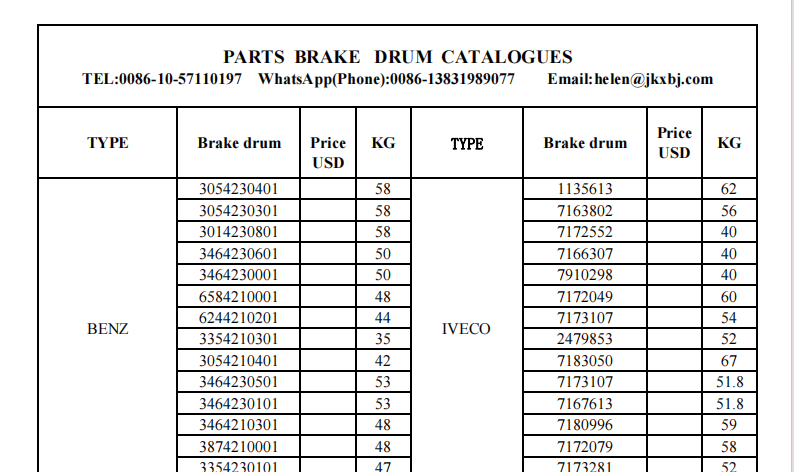Aug . 06, 2024 11:04 Back to list
Understanding the Function and Importance of Brake Drums in Automotive Braking Systems
What is a Brake Drum on a Car?
A brake drum is a crucial component of a vehicle's braking system, primarily used in drum brakes, which are still found on many cars, trucks, and motorcycles. Understanding its function, structure, and maintenance is essential for any vehicle owner who wishes to comprehend how their vehicle operates and how to maintain it for safety and longevity.
Structure of a Brake Drum
A brake drum is typically made from cast iron or steel, designed to withstand the intense heat and friction generated during braking. Its main feature is a cylindrical shape, which fits over the wheel hub. Inside, the drum has a smooth surface that interacts with brake shoes, which are equipped with friction material. When the brake pedal is depressed, hydraulic pressure forces the brake shoes outward against the inner surface of the drum, creating the friction needed to slow down or stop the vehicle.
Function of a Brake Drum
The primary function of a brake drum is to provide a surface for the brake shoes to press against, thereby converting the kinetic energy of the vehicle into thermal energy through friction. This process effectively slows down the rotation of the wheels. The design of the drum allows for effective heat dissipation, which is vital since repeated braking can generate significant heat. A well-functioning brake drum is critical for maintaining optimal braking performance and ensuring the safety of the vehicle’s occupants.
Advantages and Disadvantages of Brake Drums
what is a brake drum on a car

Brake drums have several advantages. One significant benefit is their ability to provide excellent stopping power, especially for larger vehicles that require more robust braking systems. Drum brakes tend to outperform disc brakes under certain conditions, such as when dealing with heavy loads or when the vehicle is in reverse. Additionally, brake drums are generally less expensive to manufacture and replace than disc brake systems.
However, they do come with some disadvantages. One major issue is the potential for overheating, which can lead to brake fade—a reduction in braking effectiveness. This is particularly problematic during extended downhill driving or heavy stop-and-go traffic. Another disadvantage is that drum brakes can be more complex to service than disc brakes, often requiring more time and effort to inspect and replace.
Maintenance of Brake Drums
Regular maintenance of brake drums is essential for safe vehicle operation. Drivers should routinely check the brake shoes for wear, as worn shoes can dramatically affect braking performance. Additionally, the drums themselves should be inspected for scoring, cracks, or warping. If any damage is detected, replacing the drums and shoes is usually necessary to maintain effective braking power.
Moreover, it's advisable to have the brake system professionally inspected at least once a year. During these inspections, technicians can assess the condition of the brake drums, ensuring that they are functioning properly and identifying any potential issues before they become serious problems.
Conclusion
In summary, the brake drum plays a vital role in a vehicle's braking system, offering both advantages and challenges. Understanding its function, structure, and maintenance requirements can help vehicle owners ensure that their cars operate safely and efficiently. Whether for regular maintenance or for troubleshooting issues, a thorough knowledge of brake drums and their function is essential for any driver. Proper care and attention to this important component can lead to improved performance, enhanced safety, and peace of mind on the road.
-
Scania Brake Drums: OEM Quality for Optimal Safety & Durability
NewsAug.16,2025
-
R.V.I: Advanced Remote Visual Inspection for Precision
NewsAug.15,2025
-
Discover HYUNDA: Innovative Vehicles, Equipment & Solutions
NewsAug.14,2025
-
R.V.I: Unlock Advanced Insights & Real-time Performance
NewsAug.13,2025
-
Kamaz Brake Drum: Durable & Reliable for Heavy Duty Trucks
NewsAug.12,2025
-
Heavy Duty Iveco Brake Drum - Premium Quality & Safety
NewsAug.11,2025
